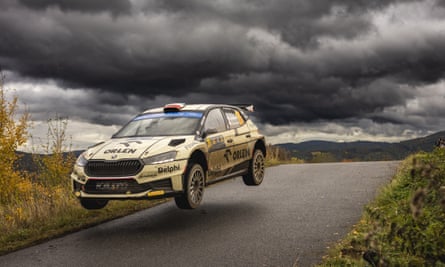What came first, the boy racer or the sports car? Academics have called for further research into the marketing of cars after analysis of UK accident data suggested that drivers of certain brands are more likely than others to cause a crash.
A study of more than 400,000 UK road accidents found that when “risky or aggressive manoeuvres” played a part in collisions, there was a significant statistical difference in driver culpability across different brands.
Dodgy driving – covering such reported infringements as speeding, jumping a red light, overtaking on double white lines or ignoring the humble pedestrian crossing – was more likely to be a factor when a Subaru, Porsche and BMW was involved than a Skoda or Hyundai.
Having factored in variables such as drivers’ ages and road types, the researchers hypothesised that branding could be to blame, in a paper published in the Journal of Social Marketing.
Lead author Alan Tapp, professor of social marketing at the University of the West of England, said: “All things being equal, you’d expect the same proportion of aggressive manoeuvres across all types.”
However, there was a higher prevalence in the Department for Transport collision data among makes he characterised broadly as those with “advertising and marketing that seems to celebrate performance driving, look at me, king-of-the-road stuff”.

Drivers of Subaru cars – once enthusiastically defined in his Top Gear days by Jeremy Clarkson as “a fire-breathing incarnation from the pixellated world of the PlayStation” whose slamming door “makes exactly the same sound as a recently shot pheasant hitting the ground” – were involved in proportionately the most “injudicious action”, the paper found.
“It’s chicken and egg – do aggressive drivers choose certain cars, or do brands make things worse?” said Tapp. “We know that some car makes spend hundreds of millions of dollars worldwide every year promoting their cars with imagery that, in some cases, subtly implies a connection between their make of car and high performance driving. We also know that the design of some makes seems to appeal to drivers who may want to push the boundaries of performance.
“Of course, these manufacturers abide by the laws and regulations that govern them and we are not suggesting otherwise. But now that this data has come to light, should we be pressing the manufacturers and regulators to take another look at the way in which modern marketing techniques might have an adverse effect on road safety?”
Co-author Dan Campsall, of road safety consultancy Agilysis, said: “While manufacturers are introducing all kinds of innovative technology to improve safety, the operator is still a human being, and we are sending them mixed messages about what is expected of them when they are driving.”
Mark Borkowski, a branding guru, said car manufacturers had long been “bewitching a consumer to buy into a lifestyle brand … you have the Top Gear or Grand Tour idiom, or movies like Fast and Furious or James Bond”.
“None of those experiences and imagery seem particularly real, but people maybe – particularly guys – step into those cars and think they’ve become those brands, even when you don’t have those Swiss mountain passes or the LA Freeway. And nothing looks more silly than being in a super-sleek car tootling slowly around on the streets of Guildford and Gosport.”









































